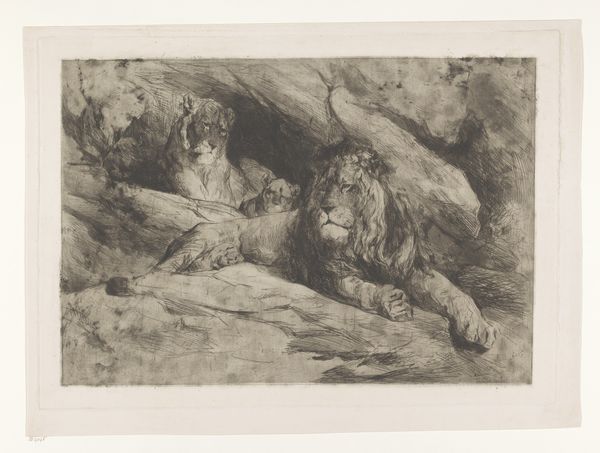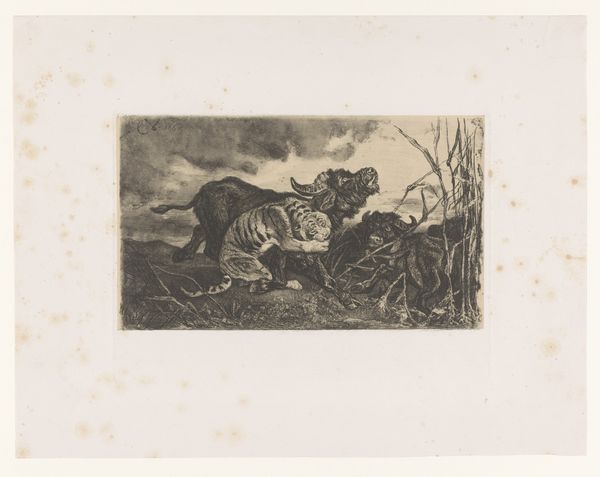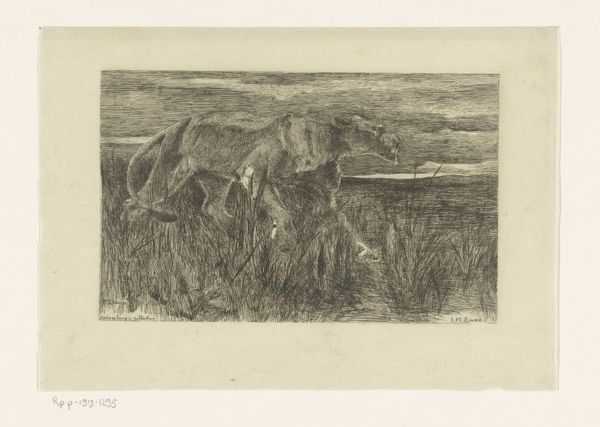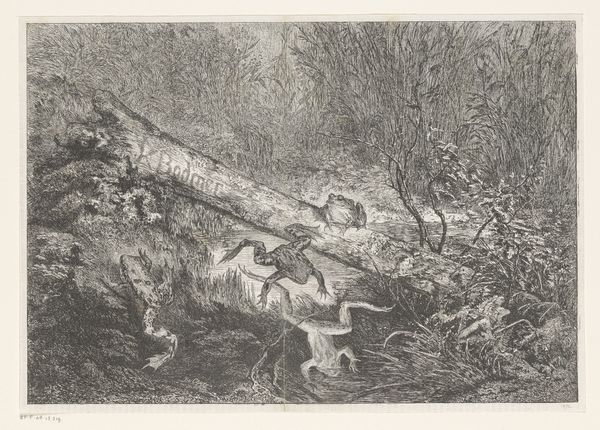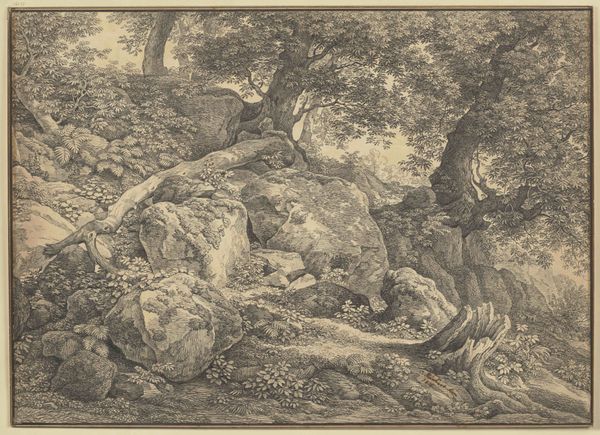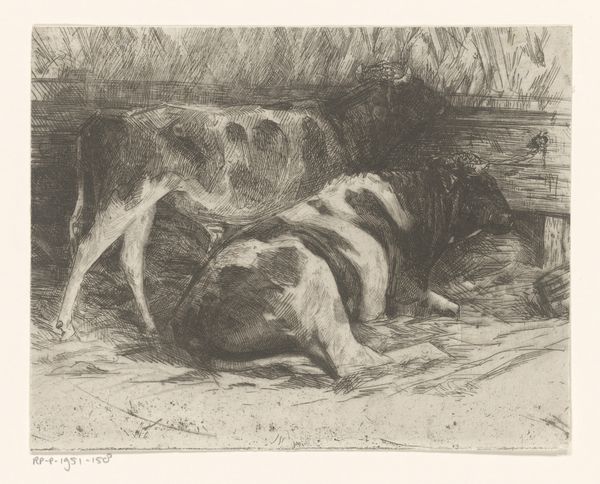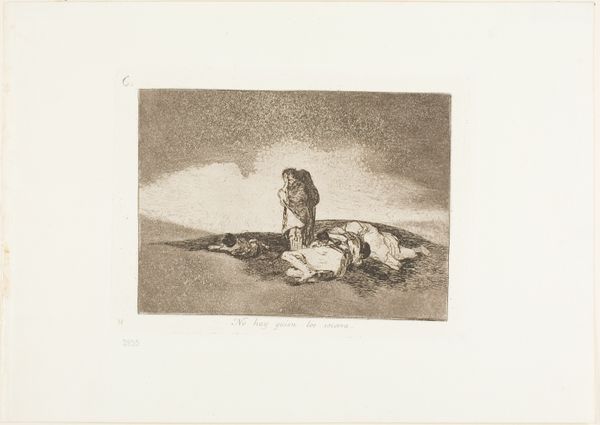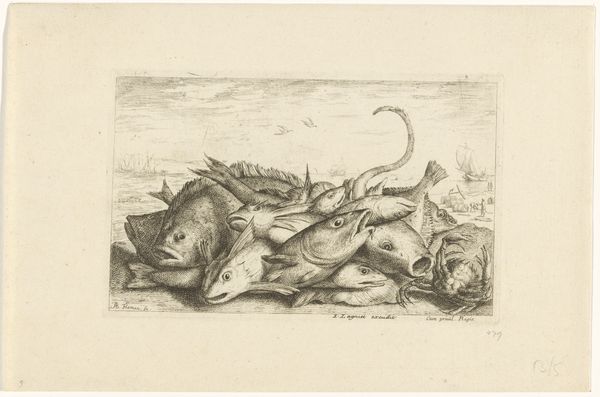
print, etching
#
animal
# print
#
etching
#
landscape
#
genre-painting
#
realism
Dimensions: height 222 mm, width 303 mm
Copyright: Rijks Museum: Open Domain
Curator: Eugène Van Hove's etching, "Two Lions Fighting Over an Antelope," likely completed between 1879 and 1910, presents a rather striking image of primal conflict. Editor: It's immediately brutal, isn't it? The raw tension conveyed through the dynamic composition of the lions and the limp form of the antelope creates an unsettling tableau. The stark contrast in light emphasizes the violence of the scene. Curator: The landscape surrounding the lions serves as a crucial structural element. The texture created by short, repetitive strokes builds into foreground and background planes of contrasting value which intensify the fight. See how the density of etching in the animals creates a focal point amidst the flat plain of the ground and sky? Editor: Lions fighting each other around an antelope carcass isn't novel. It signifies the conflict for resources, the natural selection processes, which are deeply rooted in symbolic systems. We instinctively associate these symbols of death and destruction with an almost Darwinian outlook on natural order. Curator: But, while the subject itself is conventional, consider Van Hove’s execution. The intricate network of lines – particularly within the manes of the lions and along the body of the antelope – imbues the image with an intense textural presence. They build formal volume through a subtle layering of tone. Editor: Yes, and the image also captures an interesting blend of raw animality and...something almost aristocratic in the stance of the lion atop the prey. It's as though a lord has bested an enemy for spoils. Curator: Ultimately, Van Hove’s attention to the pure rendering of forms and the formal composition of the animals elevates this simple etching beyond a basic genre painting. It becomes a very compelling meditation on texture, balance, and tension. Editor: It speaks to enduring concepts of competition and mortality, reflecting the perennial dance of survival, doesn't it? Even now, these same archetypes repeat around us, reminding us of this primal narrative in unexpected places.
Comments
No comments
Be the first to comment and join the conversation on the ultimate creative platform.


